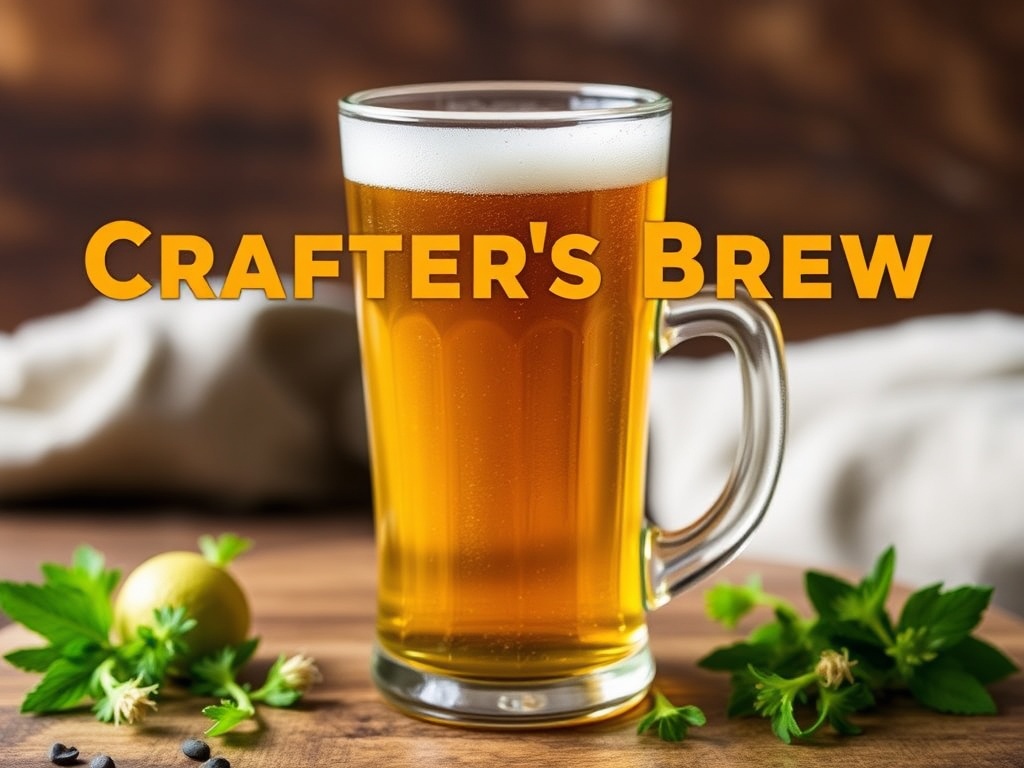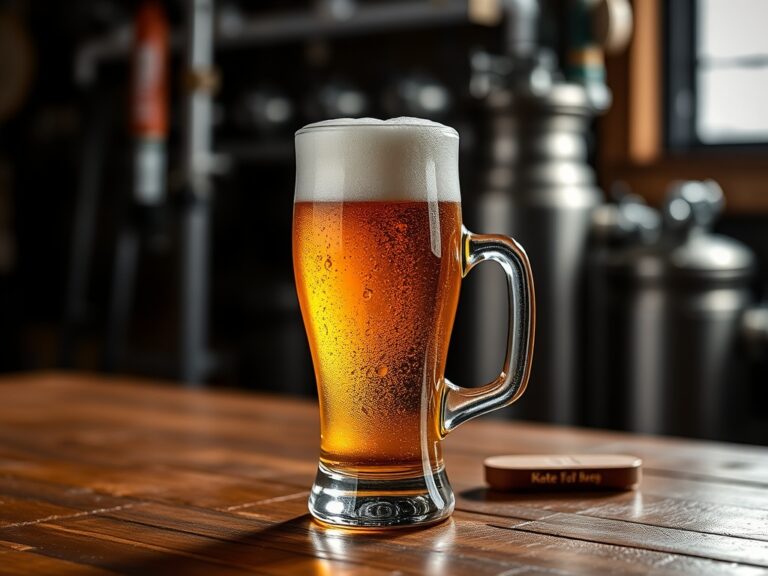Crafters Brew Secrets: Unleashing Unique Flavors and Boosting Your Homebrew Success

Understanding the Crafter’s Brew Phenomenon
In my experience with crafter’s brew, I’ve been fascinated by how this craft has evolved into a personal art form. When I first started exploring homebrewing, I quickly realized that a crafter’s brew isn’t just about mixing ingredients; it’s about creating a flavor profile that reflects your personality and creativity. From what I’ve learned, the key to unleashing the full potential of your crafter’s brew lies in understanding its core principles and experimenting with new ideas.
Over time, I discovered that the crafter’s brew movement emphasizes innovation and personalization. Whether you’re a seasoned homebrewer or just starting, embracing this mindset can help you develop unique flavors that stand out. I want to share what I’ve learned about the secrets behind crafting a truly exceptional crafter’s brew that impresses both friends and family.
How to Create a Unique Crafter’s Brew
Experimenting with Flavors and Ingredients
I’ve discovered that the foundation of a memorable crafter’s brew is experimentation. In my early days, I stuck to traditional recipes, but I quickly found that trying unconventional ingredients—like exotic herbs, fruits, or spices—can elevate your brew to a new level. I recommend keeping a journal of your experiments so you can refine your recipes over time.
From my research, adding unexpected ingredients like jalapeños for heat or lavender for floral notes can turn an ordinary brew into a distinctive masterpiece. I believe that understanding how different flavors interact is crucial, and I encourage you to taste-test along the way. Remember, the essence of a crafter’s brew is in its unique character, so don’t be afraid to push boundaries.
Personalizing Your Crafter’s Brew
In my experience, personal touches are what make a crafter’s brew truly special. I’ve found that adjusting fermentation times, varying yeast strains, or even customizing bottle labels can make the brewing process more meaningful. I recommend connecting with local brewing communities or online forums to exchange ideas and get feedback on your unique creations.
From what I’ve learned, the best brewers are those who pour their personality into every batch. Whether you prefer a smooth, sweet flavor or something more bold and bitter, tailoring your ingredients and techniques will help you craft a brew that’s all your own. The more you experiment, the more your crafter’s brew will stand out and become a signature beverage.
Ingredients and Techniques for a Perfect Crafter’s Brew
Choosing Quality Ingredients for Your Crafter’s Brew
In my journey, selecting high-quality ingredients has been paramount. I’ve found that premium malts, fresh hops, and pure yeast strains make a significant difference in flavor. I recommend sourcing ingredients from reputable suppliers to ensure consistency and quality. My personal rule is: if the ingredients are top-notch, your crafter’s brew will shine.
From what I’ve learned, experimenting with organic or locally sourced ingredients can add unique nuances to your brew. For example, using locally harvested honey or specialty grains can give your crafter’s brew a distinct regional flair. I believe that quality ingredients are the backbone of a successful homebrew, so I always prioritize sourcing the best I can find.
Techniques to Enhance Your Crafter’s Brew
I’ve discovered that mastering certain techniques can greatly improve your brewing results. For instance, controlling fermentation temperature is crucial to developing the desired flavors. I recommend investing in a good thermometer and monitoring your brewing environment carefully. Additionally, I’ve found that secondary fermentation can help clarify and refine your crafter’s brew.
From my experience, techniques like dry hopping or cold crashing can add layers of complexity that make your brew stand out. Don’t hesitate to try different fermentation durations or yeast combinations—these small adjustments can have a big impact. I believe that continuous learning and refinement are essential to creating a truly exceptional crafter’s brew.
Troubleshooting and Improving Your Crafter’s Brew
Common Challenges in Crafting a Crafter’s Brew
In my experience, the most common challenges include off-flavors, inconsistent fermentation, and clarity issues. I’ve found that these problems often stem from ingredient quality or sanitation lapses. I recommend keeping a clean workspace and following precise measurements to prevent these issues. When problems arise, I analyze each step to identify where things went wrong.
From what I’ve learned, tasting your brew at different stages helps catch potential problems early. If your crafter’s brew isn’t turning out as expected, don’t be discouraged—use it as a learning opportunity. I believe that troubleshooting is part of the craft, and each mistake can teach you valuable lessons for future batches.
Enhancing Flavor and Quality Over Time
I’ve found that aging can significantly improve your crafter’s brew. Patience is key; I recommend storing your brew in a cool, dark place for several weeks or even months, depending on the style. I’ve noticed that flavors mellow and deepen with proper aging, resulting in a more refined taste.
From my research, adding fining agents or performing cold crashing can improve clarity and flavor stability. I believe that continuous experimentation with aging times and techniques will help you develop a signature crafter’s brew that gets better with each batch. Remember, the art of brewing is a journey, not just a destination.
References and Resources
Throughout my research on crafter’s brew, I’ve found these resources incredibly valuable. I recommend checking them out for additional insights:
Authoritative Sources on crafter’s brew
-
American Homebrewers Association
homebrewersassociation.orgA comprehensive resource offering tips, recipes, and community support for crafting an exceptional crafter’s brew.
-
Journal of Brewing Science
acs.orgAn academic journal with in-depth research articles on brewing techniques, ingredients, and flavor science, perfect for refining your crafter’s brew.
-
Brew Your Own Magazine
bry.comA practical magazine offering recipes, tips, and equipment reviews to help you perfect your crafter’s brew.
-
British Brewing & Baking Journal
britishbakingandbrewing.comInsights into traditional and modern brewing techniques that can inspire new ideas for your crafter’s brew.
-
ResearchGate
researchgate.netA platform hosting scientific studies on fermentation and brewing, ideal for deepening your knowledge about the science behind your crafter’s brew.
-
Brewers Association
brewersassociation.orgIndustry standards, guidelines, and resources for professional and hobbyist brewers aiming to perfect their crafter’s brew.
-
Brewcraft
brewcraft.comA supplier with a wealth of ingredients and brewing supplies, great for sourcing components for your crafter’s brew.
-
Science Daily – Brewing Science
sciencedaily.comLatest research news and breakthroughs related to fermentation and brewing processes, keeping you informed about the science behind your crafter’s brew.
Frequently Asked Questions
What makes a crafter’s brew truly unique?
In my experience, a crafter’s brew becomes unique through personal experimentation with ingredients and techniques. I’ve found that adding unconventional flavors, adjusting fermentation times, and incorporating local ingredients help craft a brew that reflects my personality. The key is to embrace creativity and not be afraid to try new things.
How can I improve the flavor of my crafter’s brew?
From my research and personal trials, improving flavor comes down to ingredient quality, fermentation control, and aging. I recommend using fresh, high-quality ingredients and monitoring fermentation temperature closely. Patience in aging also allows flavors to develop fully, creating a more refined crafter’s brew.
What are some common mistakes to avoid with crafter’s brew?
One common mistake is poor sanitation, which can lead to off-flavors. I recommend thoroughly cleaning all equipment before brewing. Additionally, rushing fermentation or adding ingredients at the wrong time can impact flavor and clarity. Learning to troubleshoot these issues has been essential for me to consistently produce great crafter’s brew.
Can I customize my crafter’s brew for dietary restrictions?
Absolutely! I’ve experimented with gluten-free grains and alternative sweeteners to suit dietary needs. The key is to understand how these ingredients affect fermentation and flavor. I recommend starting with small batches and documenting your modifications to perfect your custom crafter’s brew.
Conclusion
In conclusion, my research on crafter’s brew has shown that the possibilities are virtually endless when it comes to creating personalized, flavorful beverages. I believe that experimentation, quality ingredients, and patience are the pillars of a successful craft. I hope this guide helps you unlock your own crafter’s brew secrets and inspires you to push your brewing boundaries. Remember, every batch is an opportunity to learn and refine, so enjoy the journey and celebrate your unique flavors.
Find out more information about “crafter's brew”
Search for more resources and information:







